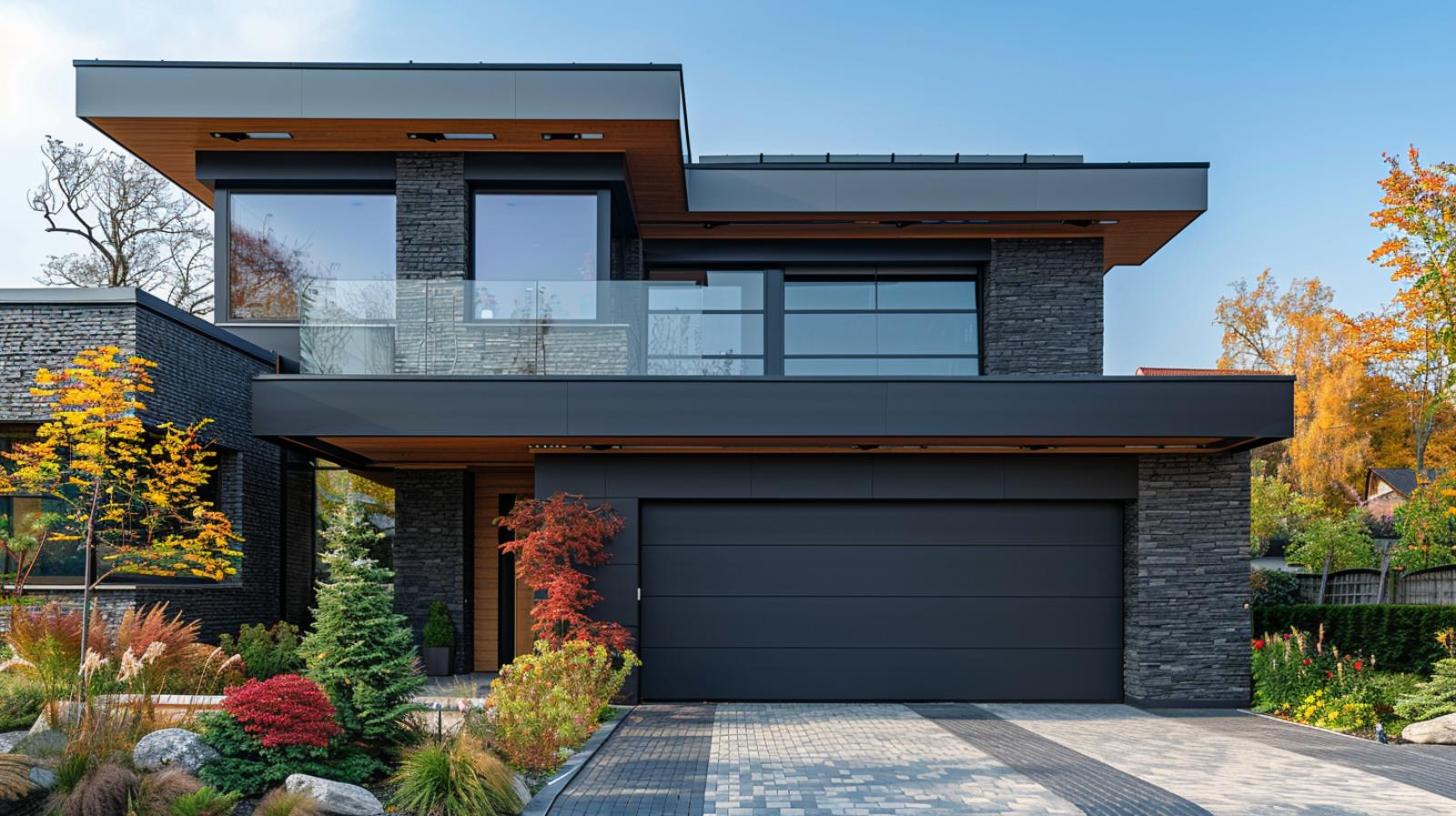
Contents
When troubleshooting common garage door issues in Grand Rapids, start by inspecting for loose parts and applying lubricant. Address uneven operation by checking balance and track alignment. Identify and clear obstructions if the door gets stuck. Fix remote control problems by changing batteries and checking for signal interference. For a non-working opener, check the power source and sensors. Confirm weather seals are intact for peak performance. Regularly maintain and align sensors for safety. Cleaning lenses and checking wiring connections are also crucial. These steps can help rectify problems and keep your garage door functioning smoothly.
Key Takeaways
- Inspect moving parts for looseness and lubricate for noise reduction.
- Check balance and track alignment for even operation.
- Clear obstructions, disconnect opener, and test door for stuck issues.
- Ensure remote batteries, signal, and opener power for malfunction troubleshooting.
- Regularly inspect, clean, and align sensors for optimal garage door safety.
Noisy Garage Door
If your garage door is producing loud, disruptive sounds, it may be an indication of underlying issues that necessitate attention. No one wants a noisy garage door disturbing the tranquility in your home or the neighborhood. However, there are noise reduction techniques that can help you achieve a quieter garage door operation.
To achieve silent operation, start by examining the various moving parts of your garage door. Tighten any loose nuts and bolts, as these can often be the cause of rattling sounds. Applying a quality garage door lubricant to the hinges, rollers, and springs can greatly reduce friction and noise. Additionally, inspect the tracks for any debris or blockages that may be causing the loud sounds.
If the noise continues, it might be time to seek help from a professional to evaluate the situation. They can pinpoint any worn-out parts that may require replacement to restore your garage door to silent operation. Keep in mind, that a well-maintained garage door not only operates quietly but also ensures the safety and security of your home and belongings.
Uneven Closing or Opening
Experiencing an uneven closing or opening of your garage door can indicate potential issues that need prompt attention to ensure smooth and reliable operation. If you notice your garage door isn’t closing or opening evenly, it could be due to problems with the leveling adjustment or track alignment.
When your garage door isn’t operating smoothly, one possible cause might be an imbalance in the leveling adjustment. The door needs to be properly balanced to ensure it moves up and down evenly. This can be adjusted by a professional to restore the balance and functionality of your garage door.
Another factor that could lead to uneven closing or opening is track misalignment. The tracks on either side of the door must be aligned correctly for the door to move smoothly. If there are gaps between the rollers and the track or if you notice bends or dents in the track, it can cause the door to operate unevenly. A technician can realign or replace the tracks as needed to address this issue.
Garage Door Stuck
If your garage door is stuck, it might be due to an obstruction blocking its path.
Try checking the sensor alignment to make certain it’s functioning correctly.
Additionally, make sure to lubricate the moving parts to keep everything running smoothly.
Stuck Due to Obstruction
When your garage door becomes stuck due to an obstruction, the first step is to identify the cause before attempting to resolve the issue. Here are some tips to help you address this problem effectively:
Obstruction detection: Carefully inspect the area around the door to find any objects blocking its path.
Safety precautions: Prioritize safety by disconnecting the door opener to prevent any accidental movement.
Clear the path: Remove any debris, tools, or items that may be hindering the door’s movement.
Check the tracks: Make sure that the tracks are free from any obstructions or damage that could be causing the door to get stuck.
Test the door: After removing the obstruction, test the door to verify it can open and close smoothly.
Check Sensor Alignment
To ensure your garage door functions properly when stuck due to sensor misalignment, adjust the sensors to align correctly. Sensor calibration is important for smooth operation.
Start by checking if the sensors are facing each other directly and aren’t obstructed by dirt or debris. Use troubleshooting techniques to guarantee they’re at the same height and are securely mounted.
If the sensors are misaligned, they may be sending incorrect signals to the garage door opener, causing it to get stuck. By realigning them, you can often resolve this issue and prevent further problems.
Regularly maintaining sensor alignment will help keep your garage door functioning efficiently and safely.
Lubricate Moving Parts
Regular maintenance of lubricating the moving parts of your garage door is crucial to prevent it from getting stuck and ensure smooth operation. Proper lubrication helps in preventing friction that can lead to issues with the door’s movement.
To make certain your garage door functions properly, follow these tips:
- Use a silicone-based lubricant for the hinges, rollers, and springs.
- Apply lubricant to the track to improve the door’s movement.
- Remember to lubricate the opener’s chain or screw drive.
- Check and lubricate the weather-stripping to maintain flexibility.
- Wipe off any excess lubricant to avoid attracting dirt and debris.
Remote Control Malfunction
Experiencing issues with your garage door remote control can be frustrating and inconvenient. When your remote control malfunctions, it can disrupt your daily routine and cause unnecessary stress. Here are some common issues you might encounter with your garage door remote and how to address them:
| Issue | Possible Cause | Solution |
|---|---|---|
| Remote not working | Battery replacement | Install a new battery |
| Inconsistent signal | Remote signal interference | Reprogram the remote |
| Garage door not responding | Troubleshooting signal loss | Check for any signal blockages |
If your remote control is not working, the first thing to check is the battery. Sometimes a simple battery replacement can solve the problem. If you notice that the signal from your remote is inconsistent, there may be interference causing the issue. Reprogramming the remote can often help resolve this issue. In the case where your garage door does not respond to the remote at all, troubleshooting for signal loss and checking for any obstacles blocking the signal path can be beneficial.
Garage Door Opener Not Working
If your garage door opener isn’t working, troubleshooting the issue is crucial to resolving the problem efficiently. Here are some steps to help you address the situation:
Check Power Source: Make sure the opener is plugged in and that the outlet is functioning correctly.
Inspect Remote Control: Replace the remote control batteries and check for any visible damage.
Reset the Opener: Try resetting the opener by unplugging it for a few minutes and plugging it back in.
Verify Safety Sensors: Ensure the safety sensors near the bottom of the garage door are clean and properly aligned.
Test Manual Operation: See if the door can be opened manually to determine if the issue lies with the opener or the door itself.
Weather Seal Issues
Inspect the weather seal along the bottom of your garage door to identify any signs of wear or damage. The weather seal plays an important role in keeping out pests, debris, and weather elements from entering your garage. If you notice any cracks, gaps, or brittleness in the weather seal, it may be time for weather seal replacement or maintenance to guarantee your garage remains protected.
Weather seal replacement is a relatively simple task that can be done to prevent further issues. You can purchase a new weather seal from your local hardware store and replace the old one by following the manufacturer’s instructions. Regular maintenance of the weather seal, such as cleaning it and applying a silicone-based lubricant, can also help extend its lifespan and effectiveness.
For those who prefer a hands-on approach, there are DIY weather seal repair tips you can try. One common method is to apply a sealant specifically designed for weather seals to fill in any cracks or gaps. Additionally, adjusting the weather seal to ensure it makes proper contact with the garage floor can improve its performance.
Safety Sensor Troubles
If your garage door is acting up, verify the alignment of the safety sensors first.
Confirm the lenses are clean and free from any obstructions.
Don’t forget to inspect the wiring connections for any loose or damaged wires.
Sensor Alignment Importance
Making sure the alignment of your garage door sensors is crucial for maintaining their effectiveness and overall safety. Proper sensor calibration and alignment adjustments can prevent accidents and ensure smooth door operation.
Here are some key points to keep in mind:
- Regularly inspect sensor alignment for any obstructions or misalignments.
- Ensure the sensors are facing each other directly across the door opening.
- Test the sensors by closing the door and waving an object in their path to see if it reverses.
- Clean the sensor lenses to maintain clear visibility.
- If the sensors aren’t working correctly, seek advice from a professional for assistance to avoid safety hazards.
Cleaning Sensor Lenses
To ensure the proper functioning of your garage door sensors, maintaining clear visibility by cleaning the sensor lenses regularly is essential. Dust, dirt, or debris can obstruct the sensor’s ability to detect obstacles, leading to malfunctions. To guarantee your sensors work efficiently, follow these simple steps for lens maintenance and sensor cleaning:
| Cleaning Steps | Materials Needed | Frequency |
|---|---|---|
| Wipe lenses with a soft cloth | Soft cloth | Monthly |
| Use a mild cleaner for stubborn dirt | Mild cleaner | Bi-annually |
| Check for spider webs or insects | Soft brush | Quarterly |
Regularly cleaning your sensor lenses will help prevent issues and keep your garage door operating smoothly.
Checking Wiring Connections
Regularly examining the wiring connections is crucial for troubleshooting safety sensor issues with your garage door. When dealing with wiring problems, paying attention to wire insulation and conducting voltage testing can help identify and resolve issues effectively.
Here are some key steps to check your garage door wiring connections:
- Confirm wire insulation is intact and without any visible damage.
- Look for loose or disconnected wires that may impact the sensor’s performance.
- Use a voltage tester to verify if the wires are receiving power correctly.
- Secure any loose connections and tighten screws to prevent further issues.
- If necessary, consult a professional for thorough inspection and repairs to ensure safety and proper functioning.
Review
Now that you’ve tackled those common garage door issues in Grand Rapids, your garage should be running smoothly once again. Remember, a little maintenance and troubleshooting can go a long way in keeping your garage door functioning properly.
So next time you hear a noise or notice a problem, don’t fret – you’ve got this! Keep those doors opening and closing like a charm.
Recent Posts
Troubleshooting Garage Door Repair: A How-To Guide
You might not realize that regular garage door maintenance can prevent costly repairs down the
3 Tips for Troubleshooting Garage Door Repairs
When your garage door suddenly stops halfway down, it can be frustrating. Start by checking
Why Troubleshooting Garage Door Repairs Matters?
Imagine trying to leave for work, but your garage door won’t budge. This frustrating scenario

